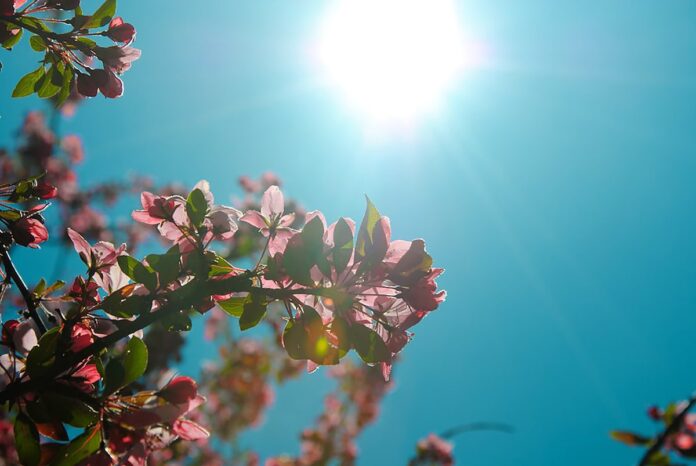Crepe myrtles are among the most cherished flowering trees, renowned for their vibrant blooms and stunning bark. With a variety of colors, including pink, white, purple, and red, these trees can transform any garden into a breathtaking display during the summer months. Their long-lasting flowers and easy maintenance make them a favorite choice for homeowners and landscapers alike.
To achieve the best results with your crepe myrtles, understanding the specific care requirements is essential. Proper crepe myrtle care involves attention to sunlight, soil conditions, watering, and pruning. This guide will walk you through the essential steps needed to keep your crepe myrtles healthy and flourishing, ensuring a spectacular display of blooms year after year. Whether you’re planting new trees or nurturing established ones, this guide will help you achieve a vibrant and colorful garden.
1. Selecting the Right Variety
Choosing the right variety of crepe myrtle is the first step in ensuring success. There are several species and cultivars, each with unique growth habits, flower colors, and sizes. Some popular varieties include the ‘Natchez,’ known for its stunning white flowers, and the ‘Muskogee,’ which offers beautiful lavender blooms.
When selecting a variety, consider the space available in your garden and the desired height and spread of the tree. Crepe myrtles can range from compact shrubs to large trees, making them versatile for various landscaping needs. Researching the characteristics of each variety will help you choose the best fit for your garden, ensuring you enjoy their beauty for years to come.
2. Ideal Planting Conditions
Crepe myrtles thrive in well-drained soil and prefer full sun, needing at least six hours of direct sunlight daily. Before planting, ensure the soil is enriched with organic matter to improve drainage and nutrient content. If your soil is heavy clay, consider amending it with compost or sand to enhance aeration.
The best time to plant crepe myrtles is in the spring when the risk of frost has passed, or in the fall for milder climates. When planting, dig a hole that is twice the width of the root ball and the same depth. This allows for proper root development. Ensuring optimal planting conditions will set your crepe myrtles on the path to healthy growth and vibrant blooms.
3. Watering for Healthy Growth
Proper watering is crucial in the early stages after planting. Crepe myrtles require regular watering until they are established, typically within the first year. During hot summer months, it’s essential to check the soil moisture and water deeply if the top inch of soil feels dry.
Once established, crepe myrtles are quite drought-tolerant, requiring less frequent watering. However, during prolonged dry periods, regular watering will help maintain healthy foliage and encourage blooming. Aim to water deeply rather than frequently, as this promotes deeper root growth, making your trees more resilient to drought conditions.
4. Fertilization Techniques
Fertilizing crepe myrtles is essential for promoting robust growth and stunning blooms. A balanced, slow-release fertilizer formulated for flowering trees is ideal. Apply fertilizer in early spring as new growth begins, and again in mid-summer to support the blooming process.
When applying fertilizer, follow the manufacturer’s instructions to avoid over-fertilization, which can lead to excessive leaf growth instead of flowers. Organic fertilizers, such as compost or well-rotted manure, can also be beneficial and help improve soil quality. Regular fertilization will ensure your crepe myrtles receive the nutrients they need for vibrant blooms.
5. Pruning for Optimal Blooms
Pruning is a vital part of crepe myrtle care that encourages healthy growth and enhances flowering. The best time to prune is in late winter or early spring before new growth begins. This timing minimizes stress on the trees and allows for vigorous new shoots.
When pruning, focus on removing dead or damaged branches and shaping the tree for better air circulation. Lightly thinning the canopy can also help improve sunlight penetration, promoting more blooms. Avoid heavy pruning, as crepe myrtles bloom on old wood. Proper pruning techniques will help maintain the desired shape of your trees while encouraging abundant flowering.
6. Pest and Disease Management
While crepe myrtles are generally hardy, they can be susceptible to pests and diseases. Common pests include aphids, powdery mildew, and spider mites. Regularly inspect your trees for any signs of infestation or disease.
If you notice pests, consider using organic insecticides or neem oil to manage the problem. Keeping your trees healthy through proper watering, fertilization, and pruning can help prevent pest issues. For diseases like powdery mildew, ensure good air circulation by properly spacing your trees and avoiding overhead watering. Being proactive about pest and disease management will keep your crepe myrtles thriving.
7. Seasonal Care Adjustments
Caring for crepe myrtles involves adjusting your care routine according to the seasons. In spring, focus on fertilization and pruning to encourage strong growth. During the hot summer months, ensure your trees receive adequate water, especially if rainfall is scarce.
As autumn approaches, consider applying mulch around the base of your trees to protect their roots from cold temperatures. In winter, monitor your trees for frost damage, especially in colder climates. By adapting your care routine to seasonal changes, you can help your crepe myrtles remain healthy and vibrant throughout the year.
8. Enjoying the Blooms
Once you have established a care routine for your crepe myrtles, you can look forward to their stunning summer blooms. The vibrant flowers can last for several months, providing a beautiful display that can brighten up your garden. Consider using crepe myrtles as focal points in your landscape design or planting them in groups for a more dramatic effect.
The blooms not only attract pollinators like bees and butterflies but also create an inviting atmosphere for outdoor activities. By ensuring that your crepe myrtles are well cared for, you can enjoy their beauty and charm throughout the growing season.
Frequently Asked Questions (FAQs)
How long do crepe myrtles bloom?
Crepe myrtles typically bloom from late spring through summer, with flowers lasting for 60-100 days, depending on the variety.
Can crepe myrtles be grown in pots?
Yes, compact varieties like Zuni and Acoma are excellent choices for growing in large containers.
Are crepe myrtles drought-tolerant?
Yes, once established, crepe myrtles are quite drought-tolerant and require minimal watering.
Do crepe myrtles lose their leaves in winter?
Yes, crepe myrtles are deciduous and will drop their leaves in winter, providing lovely autumn colors before they shed.
How do I attract pollinators with my crepe myrtles?
The vibrant flowers of crepe myrtles are rich in nectar, making them attractive to bees and butterflies during the blooming season.
Conclusion
Caring for crepe myrtles is a rewarding experience that can add lasting beauty to your garden. By following the proper care techniques from selecting the right variety and ensuring optimal planting conditions to managing watering, fertilization, and pruning you can cultivate stunning trees that bloom beautifully each summer.
Regular monitoring for pests and adapting your care routine for seasonal changes will contribute to the overall health of your crepe myrtles. With the right attention, these flowering trees will bring joy and color to your outdoor space for many years to come. Embrace the charm of crepe myrtles and enjoy a vibrant garden!

